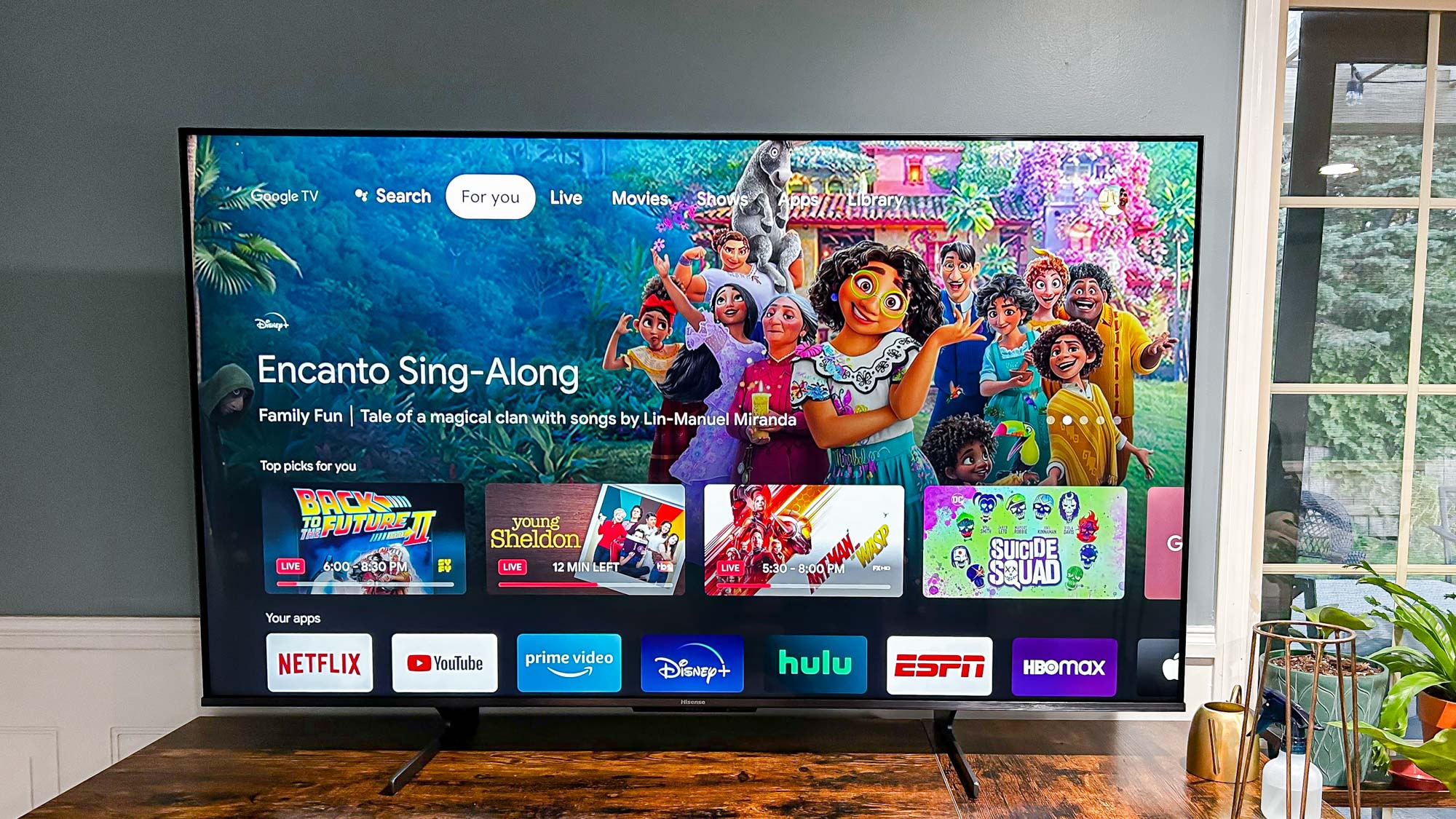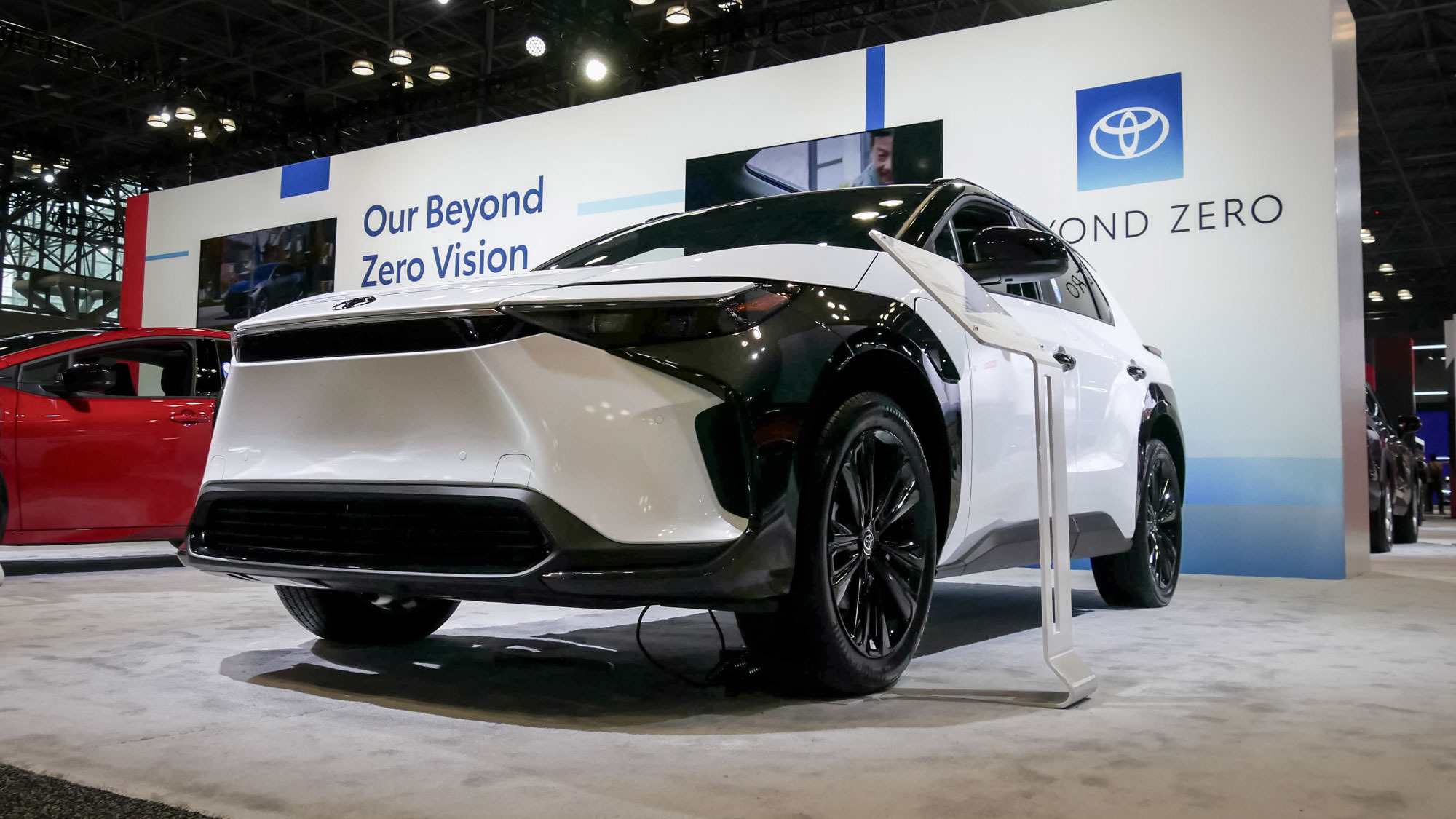
2022 should’ve been a big year for TV technology. This was supposed to be the year QD-OLED TVs took the world by storm and OLED TVs would finally reach the 1,000-nit mark for peak brightness. So far, however, QD-OLED TVs have caused little more than a rustle and high-end OLED TVs seem stuck in place at around 800 nits.
That doesn’t mean that it was a bad year for TV tech — the mid-range LG C2 OLED and Samsung QN95B still blew us away when they came across our test bench earlier this year — it just seems that my expectations for what TVs could be in 2022 were a bit too lofty.
As we close out the year, I'm looking back at what I was expecting to see this year, and what we ended up with instead.
The promise of QD-OLED didn’t deliver
I remember sitting in on the briefings for QD-OLED TVs, hearing the same line repeated over and over again: “QD-OLED promises the best of both OLED TVs and QLED TVs in a single package”. That was — and still is — true, to an extent.
The QD-OLED TVs that we’ve tested so far have offered higher brightness than LG’s regular OLED TVs and have better black levels than Samsung’s standard QLED TVs. What they didn’t tell me is that the black levels on QD-OLED wouldn’t be as good as they are on OLED TVs and their peak brightness wouldn’t be as bright as QLED TVs.
That’s exactly what we discovered when we reviewed the Samsung S95B OLED. While we were pleasantly surprised by the peak brightness of Samsung’s QD-OLED (1500 nits), it wasn’t able to sustain that brightness when the window size grew beyond 10% of the total screen. That meant great HDR highlights when there were only a few bright objects on the screen, but not very impressive brightness when everything was supposed to be bright.
"Although an OLED TV should, in theory, have a perfect black level ... the S95B doesn’t."
Black levels similarly left us disappointed. “Although an OLED TV should, in theory, have a perfect black level (because any pixel not in use is turned completely off) that results in infinite contrast,” our reviewer wrote, “the S95B doesn’t”. We could actually see the raised black level in ambient lighting.
In the end, all we could do was give Samsung’s first QD-OLED a respectable — though not quite immaculate — score of 4 out of 5.
Still, 2022 was a great year for mid-range TVs

But just because the latest and greatest TV tech didn’t turn out to be…well, that great, it doesn’t mean the rest of the year was a wash. Mini-LED TVs came down in price with the 65-inch Hisense U8H hitting an all-time low of $899 on Amazon, and the OLED Evo technology made its way from the expensive LG G1 Series into the more affordable LG C2 OLED series.
Mini-LED TVs came down in price with the 65-inch Hisense U8H hitting an all-time low of $899 on Amazon.
Both these were huge milestones for TV technology — and, in fact, one of my favorite parts of covering TVs is when super-expensive tech becomes affordable to everyone.
Take, for instance, the Mini-LED backlight inside the Hisense U8H. It helps the otherwise mid-range model hit the peak brightness of a top Samsung QLED TV while maintaining excellent contrast and great black levels.
For a time, Mini-LED was something only available in the highest-end TCL TV, before making its way into Samsung, Sony and now Hisense TVs. Each time it’s moved from one brand to another, the cost has come down some and you can now buy one for under $1,000. It’s exactly what I had hoped would happen when I saw them for the first time back in 2019.
On the OLED side of things, this was the year that the LG C2 OLED inherited the OLED Evo technology from last year’s LG G1 OLED. With it, the C2 was able to expand its peak brightness from 600 nits to 800 nits — not as big of an uptick as we might have hoped, but a solid boost nonetheless. This, too, was an example of more expensive tech making its way into a more affordable model and another small victory for TV lovers everywhere.
TVs in 2023: Outlook
Admittedly, I might’ve had too high of expectations around QD-OLED. But anyone in those briefings would have walked away with the same idea. Given that QD-OLED didn’t quite shine in its first year I’m hoping that its second year on earth might bring the refinements the technology so desperately needs.
Whatever next year brings, however, I’ll be excited to be on the frontlines to cover it for you. That said, be sure to check back in early January as we cover CES 2023 and the dozens of new TVs from Samsung, LG, Sony and others at the show.
Sign up to get the BEST of Tom's Guide direct to your inbox.
Get instant access to breaking news, the hottest reviews, great deals and helpful tips.

Nick Pino heads up the TV and AV verticals at Tom's Guide and covers everything from OLED TVs to the latest wireless headphones. He was formerly the Senior Editor, TV and AV at TechRadar (Tom's Guide's sister site) and has previously written for GamesRadar, Official Xbox Magazine, PC Gamer and other outlets over the last decade. Not sure which TV you should buy? Drop him an email or tweet him on Twitter and he can help you out.
-
JamesSneed You need to test the Sony A95K before calling it on QD-OLED TV's. Samsung went so cheap on build quality it impacted brightness ABL and their blacks suffer from trying to overcompensate. Anyhow the A95K is the real deal.Reply
